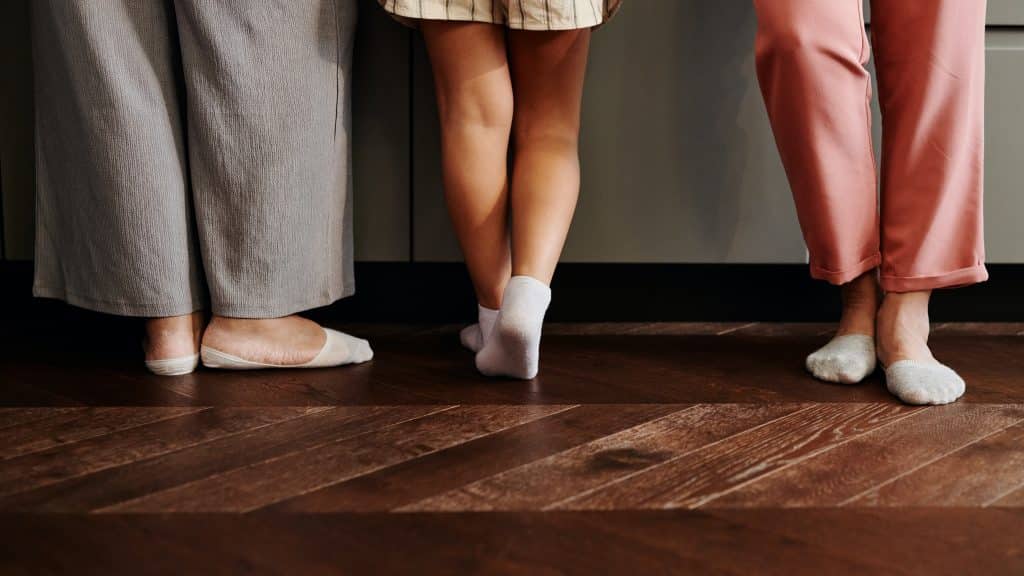
How long does it take for Underfloor Heating to heat up? This is near the top of the list for commonly asked questions regarding Underfloor Heating. For a lot of people this question is because they have heard the myth that Underfloor Heating takes ages to heat up, so, in this article, we are seeking to help you get a better understanding of how long Underfloor Heating takes to heat up.
Firstly, we have to say that there is no straightforward answer, there are so many factors that affect the heat up times however in this article we are going to cover:
- The common myth regarding the heat up time of electric Underfloor Heating
- What are the factors that affect the heat up times?
- Why it’s important to know your heat up times
- Heat up time examples
The common myth regarding heat up times of Electric Underfloor Heating.
Let’s begin with facing up to the common myth, that way we can approach the rest of the article with an open mind. The traditional myth is that Underfloor Heating takes forever to heat up. Now, this can still be true in some cases however Underfloor Heating traditionally was always installed on the slab. This meant that the heating was warming the whole slab, which then became a heat bank and became an efficient way to heat the home, but it also meant to it would take 1-2 days to heat up. Yes, that’s right, 1-2 days was the heat up time to warm your whole slab.
So, if you woke up one morning coming into winter, and it was cold, you would switch on the heating, but the floor would not be warm anytime soon. So, the myth regarding the heat up times of Underfloor Heating was born.
To defend the slow heat up times of an Inslab system though before we move on, once the slab is warm it will hold the heat well and becomes an efficient way to heat the home. Inslab systems are more suited to cold climates where winter sets in and it’s cold for long periods of time, this way you turn the Inslab Heating on and have it running for weeks or even months to keep the slab and your home warm. For more moderate areas where you have cold mornings and evenings but warm days, the heat up time means that Inslab heating is not the best way to warm your home.
What are the factors that affect heat up times of Underfloor Heating?
Now that we have cleared up the common myth, lets look at some of the factors that will affect your heat up times.
Floor Build Up
Following on from what we have discussed above, the floor build-up and where the Underfloor Heating is installed in that build-up will affect the heat up times of the Underfloor Heating. Simply put the lower down in the layers of flooring that the Underfloor Heating is installed, the longer it will take to heat up.
As mentioned, an Inslab system can take 1-2 days to heat up. A system installed in the screed will also take longer to heat through verses a system installed directly below the tiles. So, the higher up the floor heating is installed in the floor build-up the faster the heat up times will be however bear in mind that a screed or slab will create a heat bank and hold the heat for longer for you.
Substrate
Secondly, the substrate on which the heating is installed will play a part in affecting the heat up times. The substrate would normally be either concrete or timber construction. A concrete substrate is typically colder and less resistive to heat so the heat up times will be longer than a timber floor.
A timber floor on stilts with a void below will increase your heat up times, as it will mean the subfloor is colder and heat will be lost downwards into the a cold void. Read on to our point regarding insulation to understand this further.
Level of insulation
The level of insulation in the room and the floor is probably one of the single biggest factors that will affect the heat up times of your Underfloor Heating.
Heat, as opposed to hot air, moves equally in every direction. This means that the heat moving away from the heating cable will travel downwards as well as upwards. The more heat you lose downwards less effective your system will be, and it will also take longer to heat up.
Insulation below the floor or heating will substantially reduce the heat up times of electric Underfloor Heating. Insulating your floor could be done in several ways as outlined below:
- Below the slab – insulating between the ground and the slab before the slab is poured. This will mean the slab will not be as cold regardless of where the Underfloor Heating is installed in your floor build-up.
- Below a timber substrate – we just mentioned about a timber substrate with a cold void below, by insulating the underside of the timber you will greatly improve efficiency and heat up times of your underfloor heating.
- Directly below your floor heating – our econoboard (link to product page) products are laid onto your substrate with the floor heating installed directly over the top. This acts as a thermal break to minimise the heat going down into the substrate and will dramatically improve the heat up time.
Its not just the insulation of the floor though. The level of insulation in the room will also affect the heat up time. The lower the level of insulation will mean that colder the room will be and the more prone it is to heat loss.
If the room is constantly losing heat due to insufficient insulation the heat up times will increase as the heat generated is constantly being lost. No insulation in the walls, the ceiling, windows etc will all cause heat loss.
Insulation, often seen as an additional expense, is one of the most important factors for affecting heat up or cool down times as well as the running costs in any home. It may seem like a large up front cost but it absolutely pays its self-off over time, even if you don’t have floor heating?
Ambient temperature & set temperature
Another factor to consider is the ambient temperature in the room. The colder the room is, the longer it will take to heat up. This links back directly to the point above about the level of insulations in the room.
If you are measuring the time it takes to reach your set temperature, you will find this affects the heat up time. We often see people setting their floor heating in an excess of 26°c and the floor heating will struggle to reach this temperature and will certainly increase the heat up time. Unless you have a very well insulated room you will struggle to achieve these temperature levels.
A comfortable level to run your floor heating at is 21-24°c. It is also recommended to set your off temperature at around 15°c to ensure that even though the heating is effectively off, the heating would still come on to prevent the room dropping below this temperature, which will reduce the temperature difference that the heating is trying to heat up & therefore decrease your heat up time.
Thickness & type of floor finish
The thickness and type of floor finish will also affect the heat up times. The thicker the flooring the longer the heating will take to pass through and heat the room.
The floor finish will also have an influence on the heat up time, some floors are more resistive to heat passing though such as timber and carpet as opposed to tiles. Also, a tiled or stone floor is a colder floor finish and will therefore feel warmer quicker.
The Underfloor Heating system
The actual system that you have installed in the floor will affect the heat up times. Most commonly this would be if a 150W or a 200W system has been used. Essentially, the higher the wattage of the system the faster your heat up times will be. Also, it is important that you select a system that is suitable for your floor build up & it is correctly installed.
Why is it important to know your heat up time?
We have looked at the factors that influence the heat up time and we trust you agree that there are so many factors that contribute which makes it impossible to give a direct, just like an air conditioner company couldn’t give you an exact answer on how quickly they can cool down your room.
What’s most important is for you to know your heat up times. With this you can then set your thermostat accordingly so that your floor and room are warm when you want it. For example, if you find that your Underfloor Heating takes an hour to reach your set temperature, and that you want to shower at 7am, you need to program the heating to come on at 6am so that your floor and room are warm the moment you enter the bathroom.
Heat up time examples
We know it, you still want some actual numbers for the heat up times. We understand, so below we have set out some examples of the heating up times based on a number of different scenarios, so that you have an idea of what to expect for your home.

Summary
Well, there you have it, the heat up times for Underfloor Heating. We are not able to give you an exact answer however we trust this guide has helped you understand what affects the heat up times and why most importantly you need to be able find out the heat up times for your home.
If you would like to have a chat specifically about, you’re your application, floor build-up or the best system to use, then please don’t hesitate to contact us and we will be happy to discuss your requirements.

Calculate your Underfloor Heating daily usage
|

Question not answered yet? We are here to help
|

